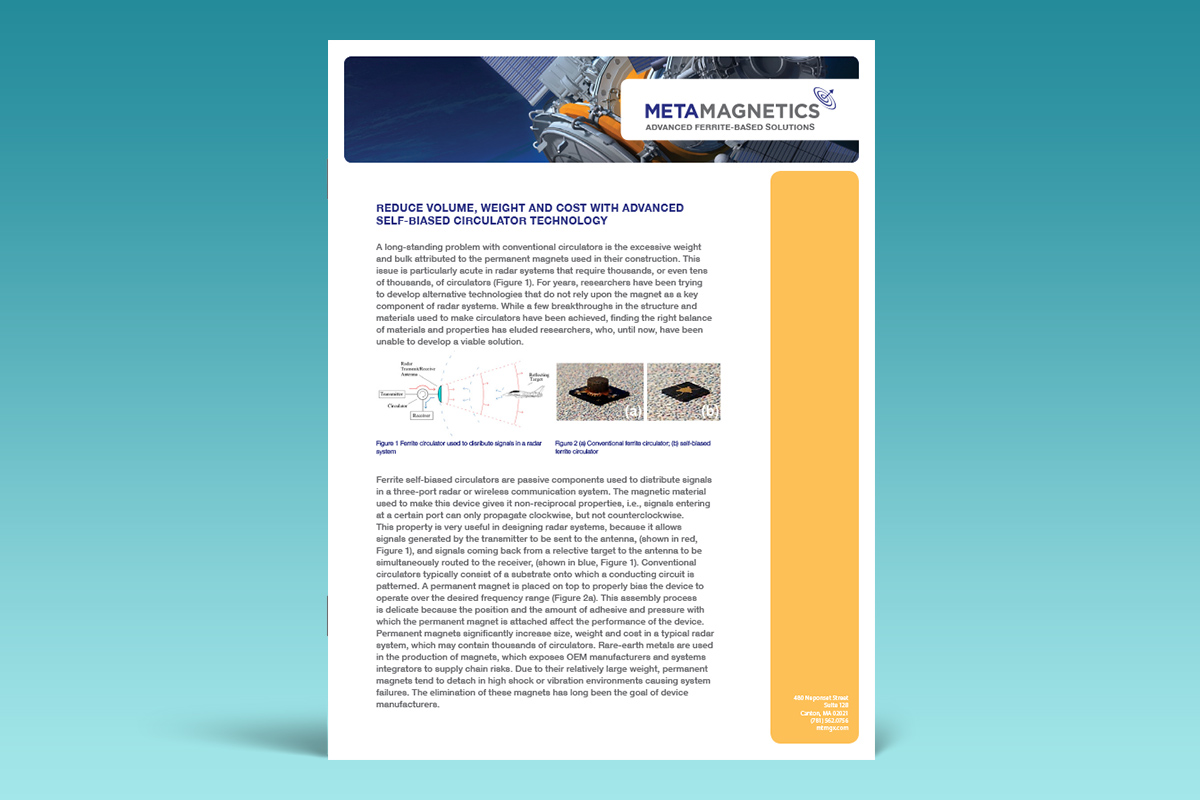
Tech brief explains how to achieve SWaP-C in Ka-band radar systems using planar monolithic surface mount isolators/circulators instead of permanent magnet technology.
RF/microwave circulators/isolators are among the most numerous signal chain components used in high frequency radar systems. They provide necessary non-reciprocal signal chain functions, i.e., signals entering at a certain port can only propagate clockwise, but not counterclockwise. This property is critical in a radar system because it allows signals generated by the transmitter to be sent to the antenna, and signals coming back from a reflective target to the antenna, to be simultaneously routed to the receiver.
Conventional circulators typically consist of a substrate onto which a conducting circuit is patterned. A permanent magnet is then placed on top to properly bias the device to operate over the desired frequency range. This assembly process is delicate because the position and the amount of adhesive and pressure with which the permanent magnet is attached will affect the performance of the device. Permanent magnets also significantly increase size, weight and cost in a typical radar system, which often contain thousands of these devices. In addition, rare-earth metals are used in the production of magnets, which exposes OEM manufacturers and system integrators to supply chain risks, and potentially dramatic and unpredictable cost fluctuations. Due to their relatively large weight, permanent magnets also tend to detach in high shock and vibration environments causing system failures. The elimination of these magnets has long been the goal of device manufacturers in response to radar system designers' requests.
In this tech brief, Metamagnetics unveils how a new planar monolithic substrate has enabled the complete elimination of permanent magnets and is now allowing radar system designers to achieve the size, weight, power, and cost (SWaP-C) reductions they've been after. These self-biased RF/microwave circulators and isolators are also able to withstand much high levels of shock and vibration and offer high ionizing radiation tolerance. Learn more by downloading the tech brief.
Download Now
